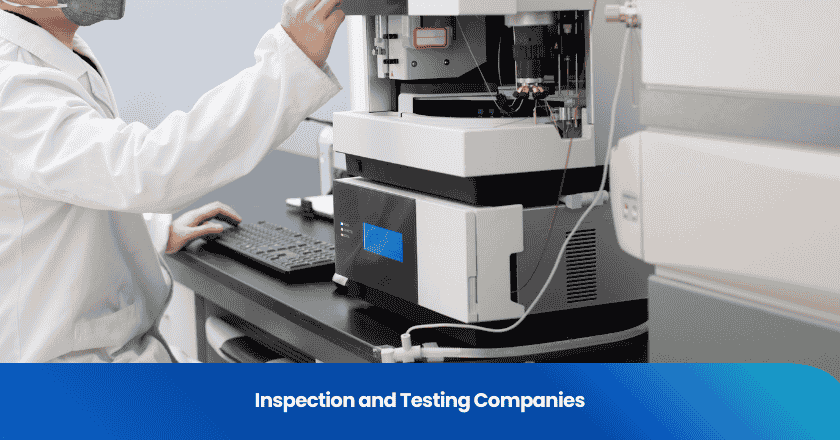
Inspection and testing companies help you maintain safety, compliance, and reliability across your operations. You benefit from services such as lab testing, non-destructive testing, field inspections, quality inspections, safety audits, environmental testing, and specialized property inspections. For example, you might see predictive maintenance inspections that use advanced technologies to spot issues before they happen, or corrective maintenance inspections that restore functionality after a problem. The digital inspection market continues to expand, with global projections reaching USD 46.7 billion by 2034.
Inspection and Testing Companies: Core Services
Inspection and testing companies deliver essential services that help you maintain quality, safety, and compliance in your operations. You can rely on these companies for lab testing, non-destructive testing, and field inspections. Each service area addresses specific industry needs.
Lab Testing
Lab testing forms the backbone of quality assurance. You benefit from mechanical durability tests, chemical composition analysis, and material safety evaluations. These tests verify that products and materials meet required standards before reaching the market. In construction, lab testing ensures that building materials like concrete and steel possess the necessary strength. In manufacturing, you can confirm that components are free from harmful substances.
The table below highlights the primary service categories and their market share:
| Service Category | Market Share (%) | Key Services Offered |
|---|---|---|
| Quality Testing | 42% | Mechanical durability tests, chemical composition analysis, material safety evaluations |
| Safety Inspection | 28% | Electrical safety testing, fire hazard analysis, structural integrity assessments |
| Certification | N/A | N/A |
Non-Destructive Testing
Non-destructive testing (NDT) allows you to assess the integrity of materials and structures without causing damage. You can choose from several widely used methods:
- Ultrasonic Testing (UT): Detects internal flaws using sound waves.
- Radiographic Testing (RT): Uses X-rays to visualize internal structures.
- Magnetic Particle Testing (MPT): Identifies surface defects in ferromagnetic materials.
- Liquid Penetrant Testing (LPT): Reveals surface-breaking defects with dye.
- Eddy Current Testing (ECT): Detects defects in conductive materials using electromagnetic fields.
- Visual Testing (VT): Involves direct observation of components.
- Thermography Testing (TT): Identifies defects through temperature variations.
You see these methods applied in aerospace, oil and gas, automotive, construction, and power generation. Recent advancements in AI and machine learning have improved the speed and accuracy of NDT, making defect detection more reliable and enabling predictive maintenance.
Quality Inspections
Quality inspections play a vital role in ensuring your products and services meet industry standards. Inspection and testing companies help you maintain consistency and reliability by following strict protocols and guidelines.
Visual Checks
Visual checks form the first line of defense against defects. You start by establishing clear visual testing standards and calibrating your equipment. Inspectors then examine products based on these guidelines and document their findings. This process helps you identify surface defects, alignment issues, and other visual anomalies before they reach your customers.
| Step | Description |
|---|---|
| 1 | Establish visual testing standards. |
| 2 | Check and calibrate visual equipment. |
| 3 | Perform inspections based on set guidelines. |
| 4 | Document findings. |
You often find three types of defects during visual checks:
- Minor defects: Small imperfections that do not affect functionality.
- Major defects: Issues that may compromise usability or safety.
- Critical defects: Severe problems that can lead to significant consequences.
Note: Clear criteria and standardized processes ensure inspectors consistently identify and address quality issues.
Functional Assessments
Functional assessments go beyond appearance. You test whether products or systems operate as intended under real-world conditions. By simulating actual use, you can detect hidden faults that visual checks might miss. Inspection and testing companies use sector-specific standards, such as ISO 9001 for manufacturing or IATF 16949 for automotive, to guide these assessments. Quality assurance guidelines help you reduce defects and maintain consistent product standards.
- Quality standards standardize processes and enhance efficiency.
- Inspection criteria and frameworks from organizations like ASTM International and ISO support reliable evaluations.
- Companies using standardized criteria have seen a 15% increase in customer satisfaction.
Client Benefits
Regular quality inspections deliver measurable advantages for your business. You achieve broader test coverage, reduce defects, and accelerate release cycles. Higher product quality leads to better user experiences and fewer complaints. Security and compliance testing keep your products safe and meet regulatory requirements.
Neglecting regular inspections can result in financial loss, customer dissatisfaction, and reputational damage. By partnering with inspection and testing companies, you protect your business and build trust with your customers.
Grow your business with TradeAider Service
Click the button below to directly enter the TradeAider Service System. The simple steps from booking and payment to receiving reports are easy to operate.



